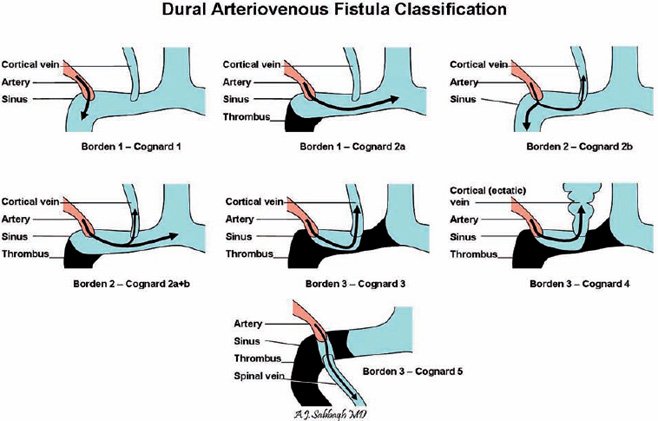Intracranial dural arteriovenous fistula classification
For spinal see Spinal vascular malformation classification.
There are numerous intracranial dural arteriovenous fistula classifications. Borden 1) and Cognard 2) are amongst the more widely used grading schemes. Cortical venous drainage is the defining angiographic feature that distinguishes benign (low-grade) from aggressive (high-grade) fistulas. (Borden I, Cognard I, and Cognard IIa are low-grade, all others are high-grade.)
Cognard classification
Cognard classification: Probably the most widely used classification system for dural arteriovenous malformations.
Djindjian Classification
Borden classification
Anterior cranial fossa dural arteriovenous fistula
Posterior fossa dural arteriovenous fistula
De novo dural arteriovenous fistula.
Cavernous sinus dural arteriovenous fistula.
Ethmoidal dural arteriovenous fistula…
Cavernous sinus DAVFs are the most common site in the series of Signorelli et al. other locations in order of frequency are transverse-sigmoid sinus, tentorial, anterior cranial fossa, spinal and foramen magnum 3).
Petrous apex dural arteriovenous fistula.
